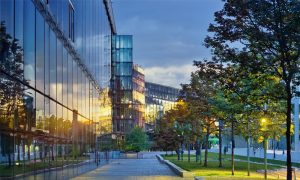Schneider Electric and Autodesk team up to increase building efficiency
Firms to collaborate on using BIM to enhance current practices in building lifecycle management

Schneider Electric and Autodesk have signed a Memorandum of Understanding that will see the two firms collaborate to enhance their current practices in building lifecycle management using Building Information Modelling (BIM).
As part of the MoU, the two companies are exploring ways to complement each other’s strengths and make buildings more energy efficient, right from design and construction through to operation and end-of-life phases.
The collaboration will include new solutions and services in the areas of energy management, building automation and control, and workspace management, a joint statement said.
“The journey to sustainable high performance buildings starts with taking a comprehensive holistic view of a building lifecycle, from design, construction, and operation including adaptation to ever changing needs of businesses and organizations,” said Jean-Luc Meyer, senior vice president, Strategy and Innovation, Schneider Electric.
“We see a huge potential in digitizing buildings project lifecycle. We believe that the cooperation with Autodesk will help drive a deep and long-term transformation in the construction industry, providing greater value to each user and contributing to solve the energy challenge.”
The firms will look to combine Schneider’s expertise in electrical distribution, energy and building management solutions with Autodesk’s portfolio of BIM-based design and construction software.
According to a report by the United Nations Environment Programme, buildings today consume about 40% of global energy, 25% of global water and 40% of global resources, while emitting approximately 1/3 of GHG emissions. Furthermore, residential buildings consume approximately 60% of the world’s electricity.
Despite the alarming figures, the report adds that buildings also offer tremendous potential for achieving significant GHG emission reductions. The shift towards digital BIM processes is part of the solution to more energy efficient homes and buildings, by delivering great agility and long-term sustainability, it added.
“The operation and maintenance phase of the building presents a huge opportunity to drive greater energy efficiency over the long-term for building owners, and we’re thrilled to be teaming with Schneider Electric to explore how we can bring new solutions to market that connect energy efficiency throughout the entire building lifecycle,” said Amar Hanspal, Autodesk Senior Vice President, Information Modeling & Platform Group.
























